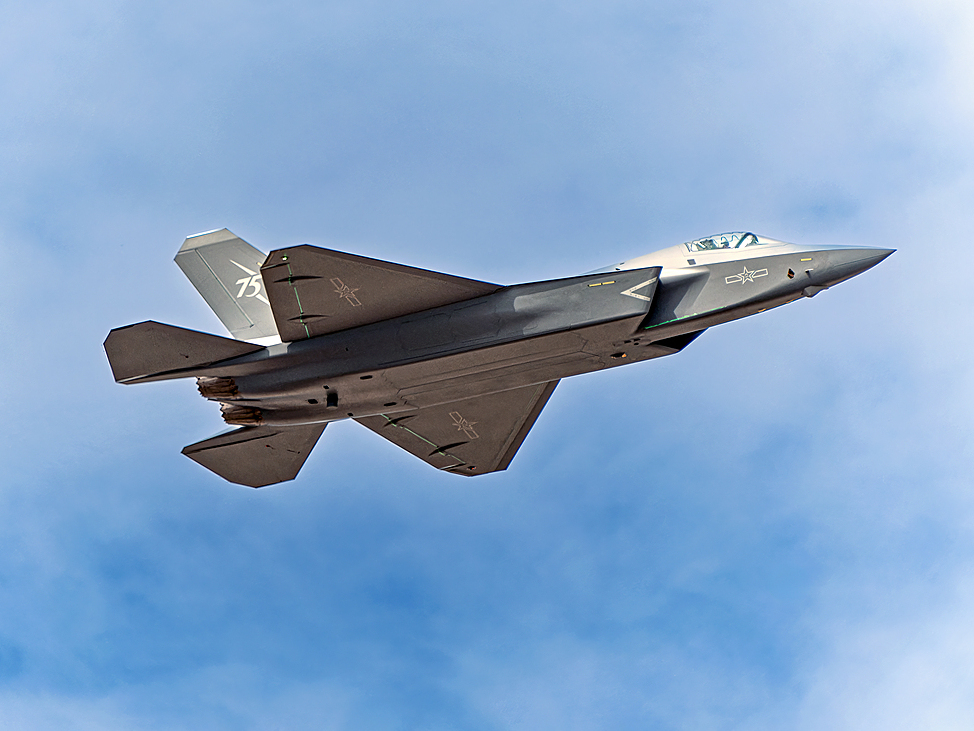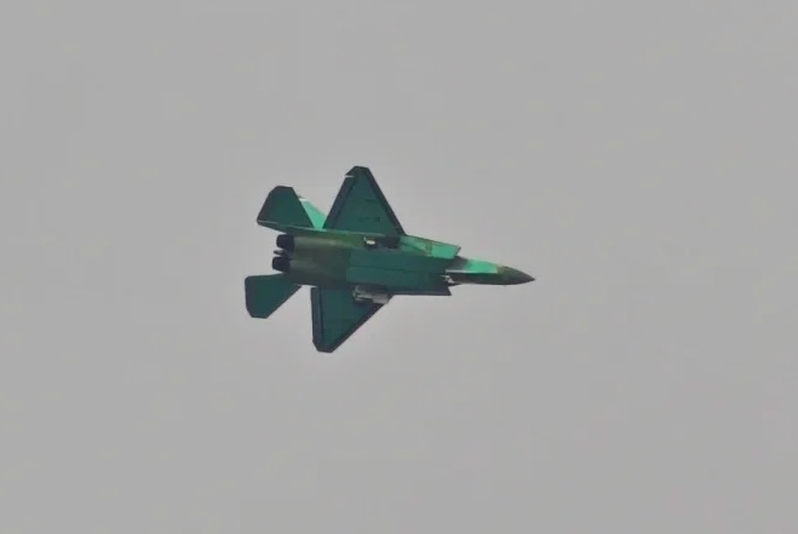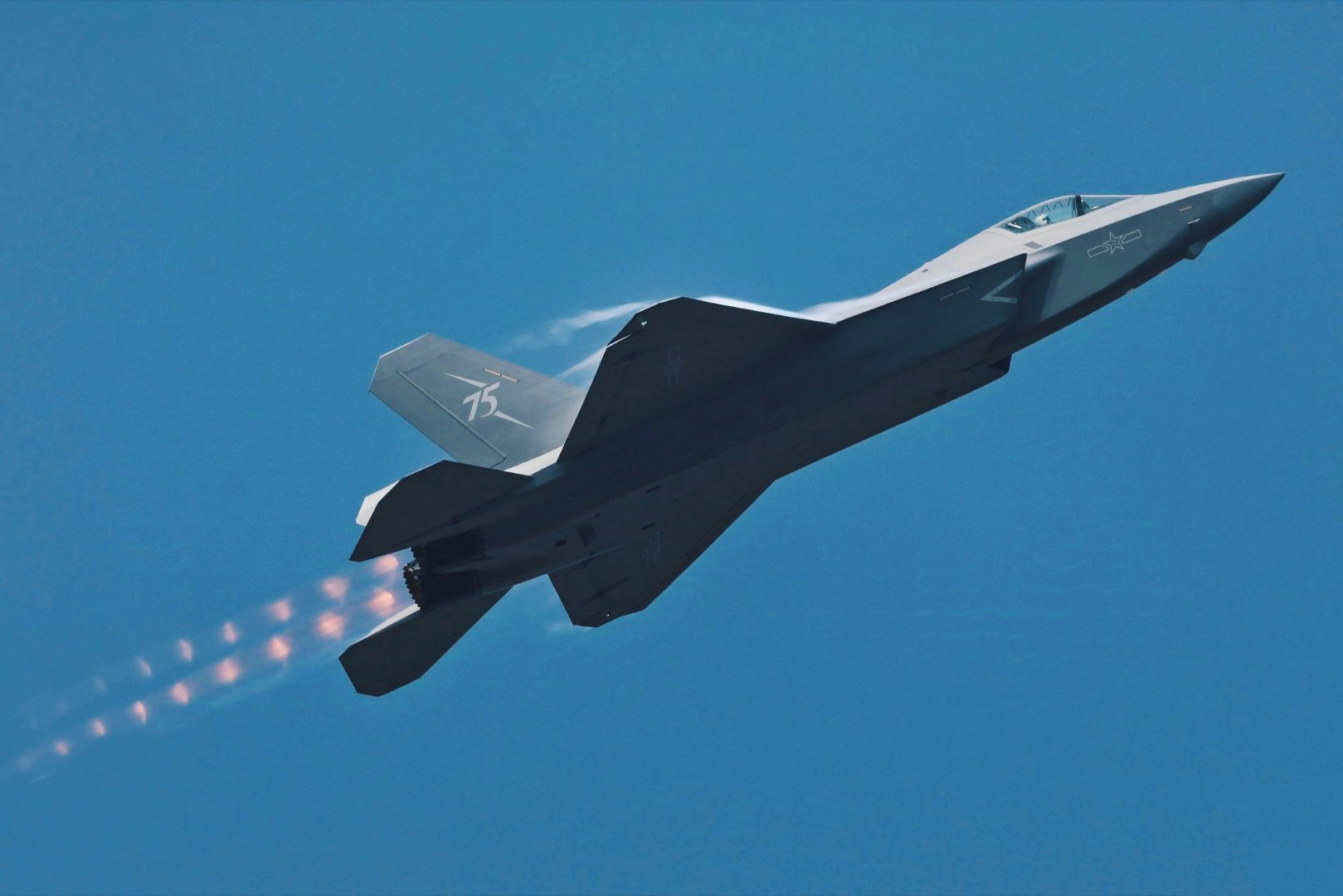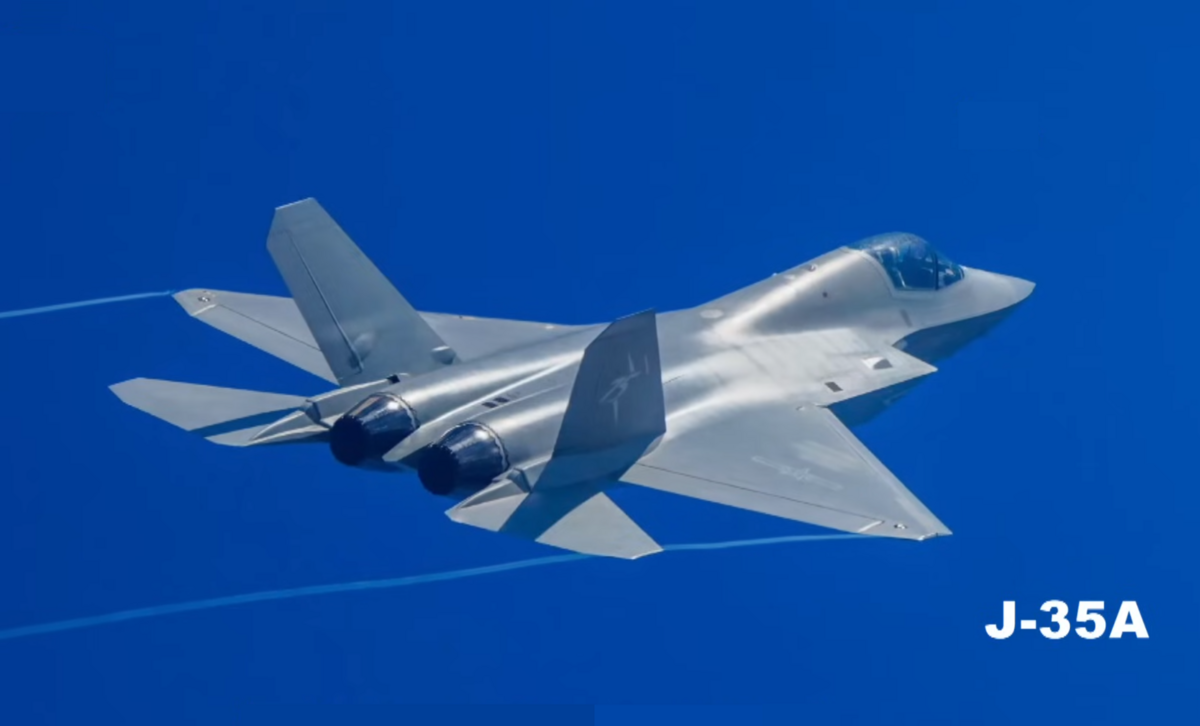China’s J-35A Stealth Fighter Set for Mass Production, Designed to Be the ‘Point Guard’ of Future Wars
The model version of the J-35A is now slated to appear internationally at the upcoming 55th Paris Air Show, further projecting Beijing’s stealth capabilities onto the global stage and reinforcing China’s ambition to become a mass producer of fifth-generation air combat platforms.
(DEFENCE SECURITY ASIA) — China’s J-35A fifth-generation stealth fighter jet is rapidly emerging not just as a new-generation warplane, but as a key enabler of China’s vision of future warfare—one designed to be deployed in large numbers and to lead from the front as a battlefield “point guard.”
Since its sensational debut at Airshow China 2024 in Zhuhai, the J-35A has drawn global attention for both its advanced airframe and its doctrinal significance as a command-oriented platform in system-of-systems combat environments.
The model version of the J-35A is now slated to appear internationally at the upcoming 55th Paris Air Show, further projecting Beijing’s stealth capabilities onto the global stage and reinforcing China’s ambition to become a mass producer of fifth-generation air combat platforms.
Developed by Shenyang Aircraft Design and Research Institute under AVIC, the J-35 series adheres to two defining principles: “air-sea twin configuration” and “one aircraft, multiple variants”, allowing it to operate seamlessly across air force and naval domains, while minimizing logistical overhead.
Speaking to the Global Times in an exclusive interview, Wang Yongqing, the chief designer and AVIC expert, emphasized that the J-35 was deliberately conceived to support high-volume production, paving the way for a large, stealth-enabled fleet capable of fulfilling both combat and command roles in future warfare.
“‘Air-sea twin configuration’ and ‘one aircraft, multiple variants’ of the J-35 series is a development program we’ve undertaken in response to the country’s needs. We are steadily advancing this project in strict accordance with the planned roadmap,” Wang said.
The J-35A’s public debut at Zhuhai marked a watershed moment for Chinese military aviation, as the aircraft showcased its high thrust-to-weight ratio, maneuverability, and stunning afterburner display, with visible Mach diamonds painting the skies in a symbolic display of next-gen power projection.

Yet beyond the visual spectacle, the J-35A is built around a strategic logic—to serve as a forward-operating coordinator in joint-force operations, embodying a new command philosophy in airpower not limited to dogfighting, but extending into airborne leadership and digital battle management.
Wang likened the role of the J-35A to that of a “point guard” in basketball, stating: “The J-35A not only demonstrates outstanding ‘scoring ability,’ but also effectively coordinates other battlefield assets for joint operations.”
This analogy is more than metaphorical—it reflects a systemic doctrine where the J-35A functions not merely as a stealth shooter, but as an airborne control node, relaying tactical data across multiple warfighting domains including drones, surface fleets, AEW&C aircraft, and missile batteries.
According to Wang, the aircraft’s design integrates modular avionics, interoperable sensors, and scalable mission systems, which are shared across variants—greatly reducing unit production costs and accelerating assembly-to-deployment timelines.
“Many of our research achievements can be applied across different variants, such as sensors, onboard equipment, and avionics systems,” he said, illustrating how common architecture has unlocked China’s ability to streamline production and deploy at scale.
By implementing a cross-variant design framework, the J-35 program aims to achieve fleet commonality, thereby cutting long-term maintenance costs, reducing spare parts diversity, and improving operational uptime during conflict.
Wang also emphasized the centrality of combat effectiveness during the design phase, particularly focusing on enhanced stealth characteristics, broadband radar absorption, and integration into AI-assisted targeting and mission-planning networks.

“This development model has significantly reduced both the costs and time required for fighter jet development,” he added, pointing toward a production strategy engineered not just for domestic defense, but also potential export to friendly nations seeking affordable fifth-gen capability.
As geostrategic rivalries intensify across the Indo-Pacific, particularly over Taiwan, the East China Sea, and South China Sea, the J-35A’s twin ability to be mass-produced and to lead battlespace orchestration gives Beijing an increasingly credible edge in shaping aerial dominance and networked warfare.
Its operational philosophy mirrors evolving concepts such as Joint All-Domain Command and Control (JADC2) and multi-domain operations (MDO) pursued by Western militaries—indicating that the J-35A is as much a response to adversary doctrine as it is a platform of indigenous innovation.
As the J-35A enters the international spotlight in Paris, its significance lies not only in its stealth airframe, but in what it symbolizes—a scalable, command-centric warfighting platform designed for China’s rise as a peer military power in the 21st century.
In short, the J-35A does not merely participate in combat—it orchestrates it, and that design choice, paired with its mass-producible architecture, may reshape the calculus of future air wars across Asia and beyond.
The J-35A, also known as the FC-31 or “Gyrfalcon,” is China’s second fifth-generation stealth fighter jet developed by the Shenyang Aircraft Corporation (SAC) under AVIC and represents a significant leap in Beijing’s air combat capability, particularly in terms of mass production and multi-role versatility across both land- and carrier-based operations.

Designed with low observability, high agility, and advanced sensor fusion, the J-35A is a medium-sized twin-engine multirole fighter tailored to compete with Western counterparts such as the F-35 Lightning II and F/A-18E/F Super Hornet, while offering export-friendly scalability for nations aligned with China’s defence industry.
Powered by twin WS-13E or newly developed WS-19 turbofan engines with afterburners, the J-35A is projected to reach maximum speeds of Mach 1.8 with a combat range exceeding 1,200 kilometers, depending on payload configuration and fuel capacity.
With an estimated maximum takeoff weight (MTOW) of around 25,000 kilograms, the J-35A supports an internal weapons bay for stealth missions and six external hardpoints for a diverse mix of air-to-air and air-to-ground munitions, including PL-15 beyond-visual-range (BVR) missiles, PL-10 short-range missiles, and guided precision bombs.
The aircraft features a divergent chin intake design, canted twin vertical stabilizers, and a stealth-optimized fuselage, reflecting China’s lessons learned from radar-deflective shaping and infrared suppression.
Its cockpit includes a single-piece bubble canopy housing an advanced glass cockpit, wide-area display (WAD), and helmet-mounted display system (HMDS), giving pilots comprehensive situational awareness and sensor fusion comparable to Western fifth-gen fighters.
Avionics are expected to include Active Electronically Scanned Array (AESA) radar, electro-optical targeting systems (EOTS), infrared search and track (IRST), and electronic warfare (EW) suites—providing multiband threat detection and networked combat capabilities.


